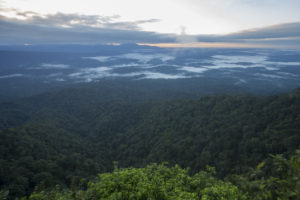The latest edition of the IETA (The International Emissions Trading Association) insights 2018 has been released ahead of the Global Climate Action Summit in September 2018. It reports on the activity of carbon pricing globally, with a focus on the Americas, analyses ICAO’s CORSIA offsetting mechanism, and touches on Asia Pacific news, highlighting proposals from New Zealand to reform its ETS in line with its aim to become carbon neutral by 2050.
The report also gives a high-level overview of the Declaration on Carbon Pricing in the Americas, which, following the Paris Agreement, is an example of collaboration among governments to enhance their commitment to fight climate change and reaffirm their support for the Paris Agreement, as well as updating on what signatories have achieved thus far. Additionally, a large section of the report is dedicated to reporting on the main developments in 15 jurisdictions in Canada and the United States, with particular analysis of the implications of the Ontario decisions earlier in the year.
Included within the report is an article by Althelia (parent company to Ecosphere+) and carbon trading specialist law firm Baker Mackenzie which encourages private investments in REDD+ in the post-2020 Paris Agreement world. Whilst signatory companies are working out the rules for international carbon markets under the Paris Agreement, many tropical forest countries such as Peru are ploughing ahead to preserve their forests and valuable ecosystems, with a view to counting these avoided emissions towards their nationally determine contributions, i.e. “nesting” their REDD+ projects.
Althelia’s Edit Kiss and Juan Carlos Gonzalez Aybar explain how Peru is approaching nested projects, the challenges ahead, and how the country can open the door for increased private sector capital.
REDD+ projects which are already recognised by Article 5 of the Paris Agreement have the potential to play a significant role in the global climate change solution (figure 1 below) by driving higher ambition through cost- effective emission reductions with significant co-benefits for biodiversity and people’s livelihoods.
Many tropical forest countries that host REDD+ projects have been at the forefront of implementation of necessary sustainable land use activities in the rainforest with local communities, bringing private investment, as well as developing monitoring, reporting and verification processes, and encouraging the sharing of best practices for REDD+ activities. These countries are trying to harmonise these early action best-in-class REDD+ project activities within their REDD+ systems, aligning with their national forest emission reference levels. This means they can contribute to their NDC contributions, making the model highly replicable, with the Peruvian case providing an example for other countries.
Peru has successfully illustrated a way for REDD+ nesting pathway for projects, opening the door for sustained and scalable financing for NDCs. Going forward, the way these REDD+ projects (by leading countries like Peru) are accounted for and continued to be managed will be closely watched by other REDD+ countries that are beginning to address similar issues. Specific issues such as how to avoid double accounting issues in the short run will be particularly focused on. As, if not done right and if a country does not work out how REDD+ projects can contribute under national level accounting, risk issues with potential double counting in their NDCs, consequentially this may endanger private sector investment in REDD+ projects. And as private sector investment is key, developing clear guidelines and rules that define how projects will operate within national level programmes will be an essential element of ensuring the long-term success of REDD+ and also for countries meeting Paris Agreement goals.
Further reading:
The full nesting article in Issue 3 of IETA Insights
The press release about the nesting of the projects in Peru
Tambopata- Bahuaja Biodiversity Reserve, Peru
Cordillera Azul National Park Conservation Project, Peru


